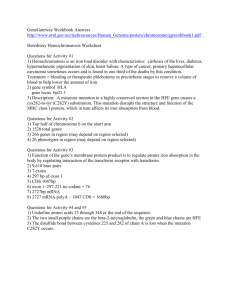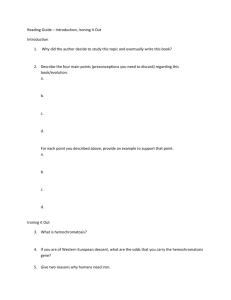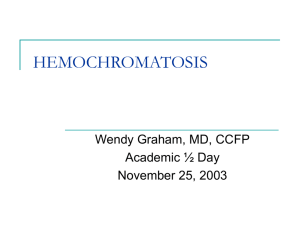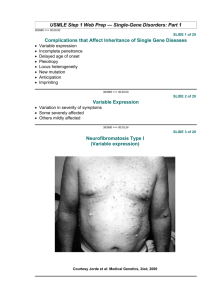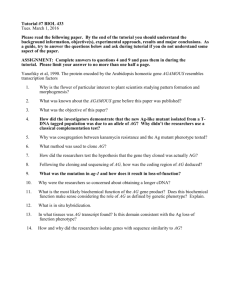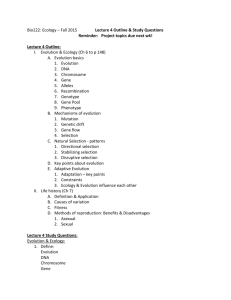Survival of the Sickest
advertisement
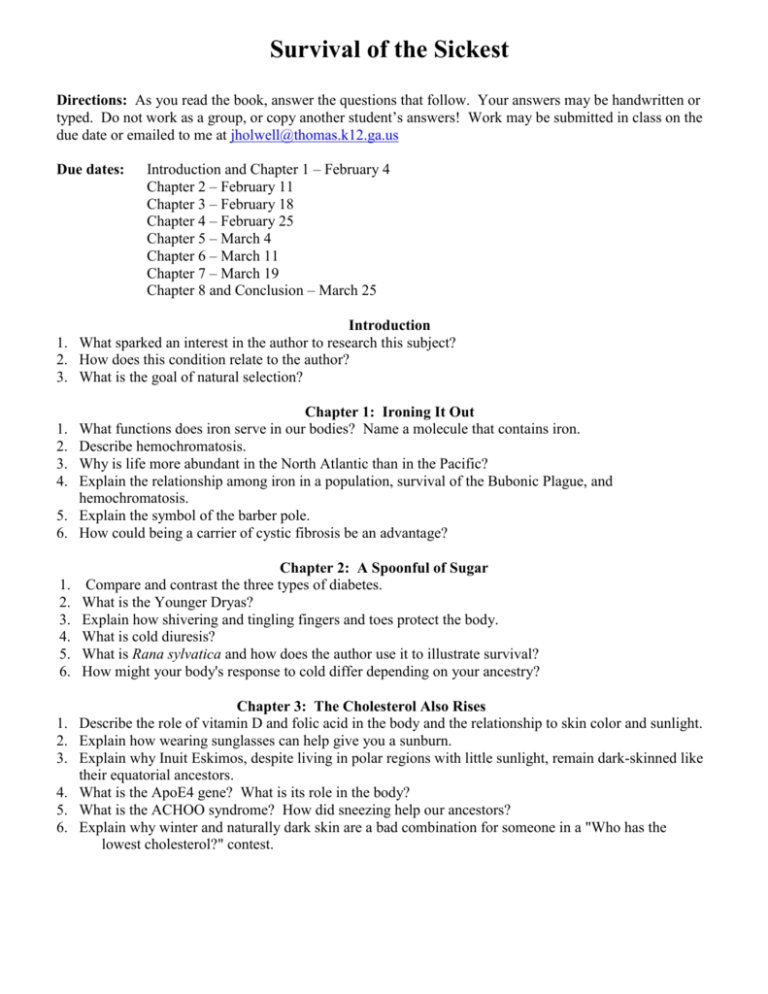
Survival of the Sickest Directions: As you read the book, answer the questions that follow. Your answers may be handwritten or typed. Do not work as a group, or copy another student’s answers! Work may be submitted in class on the due date or emailed to me at jholwell@thomas.k12.ga.us Due dates: Introduction and Chapter 1 – February 4 Chapter 2 – February 11 Chapter 3 – February 18 Chapter 4 – February 25 Chapter 5 – March 4 Chapter 6 – March 11 Chapter 7 – March 19 Chapter 8 and Conclusion – March 25 Introduction 1. What sparked an interest in the author to research this subject? 2. How does this condition relate to the author? 3. What is the goal of natural selection? Chapter 1: Ironing It Out What functions does iron serve in our bodies? Name a molecule that contains iron. Describe hemochromatosis. Why is life more abundant in the North Atlantic than in the Pacific? Explain the relationship among iron in a population, survival of the Bubonic Plague, and hemochromatosis. 5. Explain the symbol of the barber pole. 6. How could being a carrier of cystic fibrosis be an advantage? 1. 2. 3. 4. 1. 2. 3. 4. 5. 6. 1. 2. 3. 4. 5. 6. Chapter 2: A Spoonful of Sugar Compare and contrast the three types of diabetes. What is the Younger Dryas? Explain how shivering and tingling fingers and toes protect the body. What is cold diuresis? What is Rana sylvatica and how does the author use it to illustrate survival? How might your body's response to cold differ depending on your ancestry? Chapter 3: The Cholesterol Also Rises Describe the role of vitamin D and folic acid in the body and the relationship to skin color and sunlight. Explain how wearing sunglasses can help give you a sunburn. Explain why Inuit Eskimos, despite living in polar regions with little sunlight, remain dark-skinned like their equatorial ancestors. What is the ApoE4 gene? What is its role in the body? What is the ACHOO syndrome? How did sneezing help our ancestors? Explain why winter and naturally dark skin are a bad combination for someone in a "Who has the lowest cholesterol?" contest. 1. 2. 3. 4. 5. 1. 2. 3. 4. 5. Chapter 4: Hey, Bud, Can You Do Me a Fava? What is favism? What are free radicals? How are they harmful? What enzyme in our cells protests against them? What are phytoestrogens and how are they related to birth control? Explain why hot peppers burn our tongues but birds don't feel the heat. What does G6PD have to do with malaria? Chapter 5: Of Microbes and Men Describe the effect of the Guinea worm on man. How is it related to the symbol of medicine? Why might antibiotics and yogurt be a good combination? Explain how, through host manipulation, the organism that causes a disease (choose one) helps insure that others like it get into a new victim. Why is the common cold not considered to be very virulent? If you were an extremely virulent (powerful) disease-causing organism, how would you choose to be transmitted from victim to victim? 1. 2. 3. 4. 5. Chapter 6: Jump Into the Gene Pool Edward Jenner created the first vaccine. Describe how a vaccine works. Explain how we are, in a manner of speaking, like a soup made of mammal, bacteria and virus ingredients. Explain the link between sunspots and flu epidemics. Explain how Lamarck got an undeserved bad name. What is “junk DNA” and why is it no longer considered an appropriate name? 1. 2. 3. 4. Chapter 7: Methyl Madness: Road to the Final Phenotype What is epigenetics and how does the author relate it to childhood obesdity? What is DNA methylation? How does it explain the agouti gene? What is the thrifty phenotype hypothesis? What can explain the differences in identical twins acquiring a disease? 1. 2. 3. 4. 5. 6. 7. Chapter 8: That's Life: Why You and Your I-Pod Must Die Compare and contrast Hutchinson-Gilford progeria syndrome and Werner syndrome. Why are they referred to as orphan diseases? Explain the Hayflick limit and how it relates to concer. How does telomerase relate to the immortality of cancer cells? So, why must you and your iPod die? (see p 190) What two ends are accomplished by aging? Describe the three factors that make delivering a baby so different for humans compared to other primates. Conclusion The author hopes that you will come away from this book with an appreciation of three things: Life is in a constant state of creation Nothing in our world exists in isolation Our relationship with disease is often much more complex than we may have previously realized. What is your opinion of or reaction to this book?
